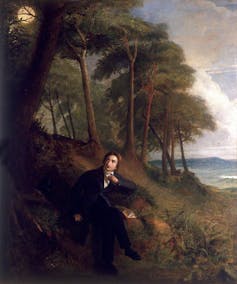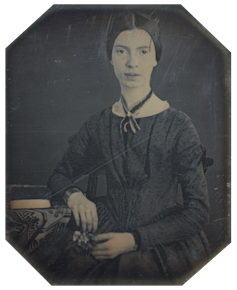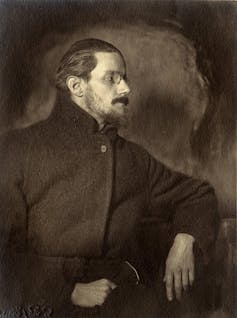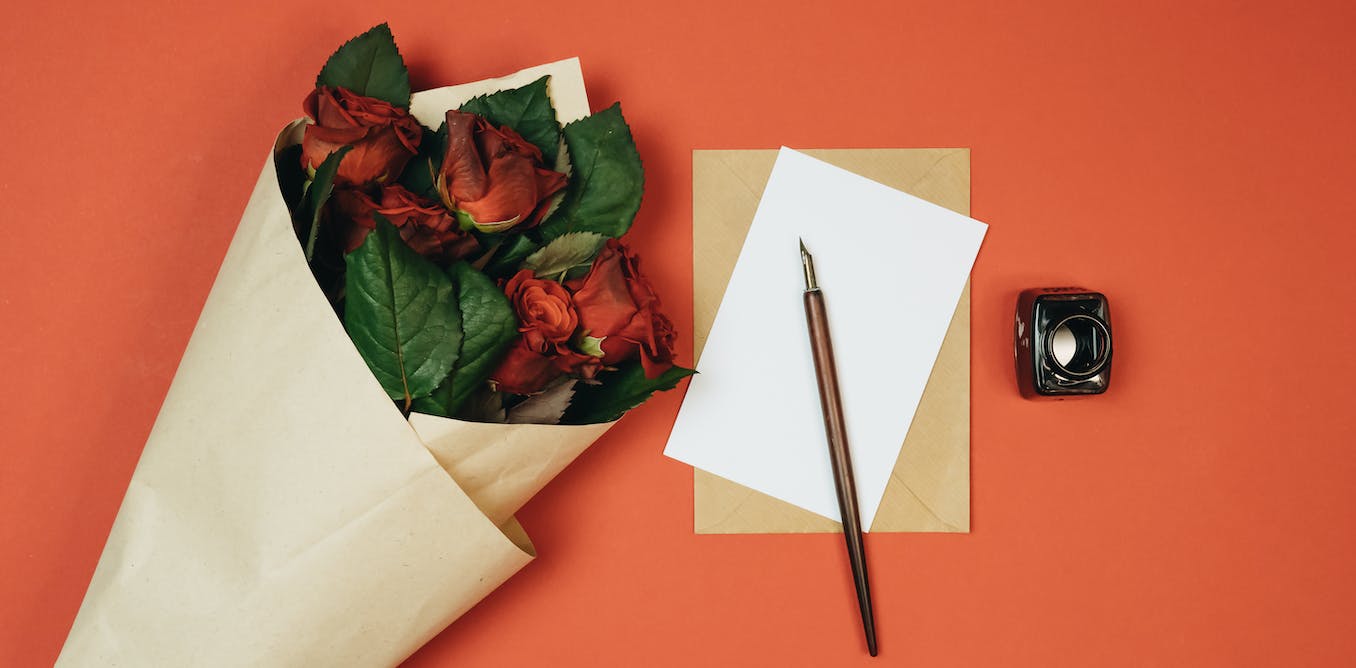Most of us, these days, communicate via text message, email and posts on social media. The age of the letter, it seems, is past.
But there’s something a letter can communicate, that a WhatsApp message or Instagram Story can’t. Having spent a lot of the last ten years thinking about different forms of writing, I want to suggest that we should write more letters – specifically, more love letters.
And given that many of us are out of practice in this important art, I want to turn to some of the English language’s most touching, intimate, and outrageous love letters for inspiration.

This article is part of Quarter Life, a series about issues affecting those of us in our twenties and thirties. From the challenges of beginning a career and taking care of our mental health, to the excitement of starting a family, adopting a pet or just making friends as an adult. The articles in this series explore the questions and bring answers as we navigate this turbulent period of life.
You may be interested in:
‘Love languages’ might help you understand your partner – but it’s not exactly science
It might be scary but making phone calls can be good for young people’s wellbeing
Anxiety can lead to erection problems in young men – but reaching for Viagra isn’t always the solution

City of London Corporation, CC BY
Letters require pen, ink, paper, stamps, and, more often than not, a desk or table to lean on. The physicality of letters – not just their paper-and-inkiness, but the fact that they have passed through the hand, as much as the heart, of their authors – has always been their appeal.
Poet John Keats has become the archetype of the doomed romantic. His letters to Fanny Brawne are testament both to his brilliance as a writer and his passion as a lover.
It is striking how frequently, throughout his correspondence, Keats expresses pleasure at having missed the post. As he opens his first letter to Fanny:
I am glad I had not an opportunity of sending off a letter which I wrote for you on Tuesday night – ’twas too much like one out of Rousseau’s Heloise. I am more reasonable this morning.
Letters both express the feelings of a moment and are also the result of recollection and revision: “The morning is the only proper time for me to write to a beautiful Girl I love so much.”
Love letters and longing

Amherst College Archives & Special Collections
The longing for the presence of an absent lover is the love letter’s key characteristic. In Keats’s first letter to Fanny, this is expressed subtly, through a description of writing on the Isle of Wight. It would be a lovely place to live, Keats remarks, were it not for the “remembrance” of the absent Fanny.
Author Henry James’s touching letters to the sculptor Hendrik Andersen (his “dear Boy”) are more pragmatic in their imagination of Hendrik’s presence in James’s home: “My little old house is … on a very limited scale indeed. But it serves my turn and will serve yours.”
This anticipation of Hendrik’s presence is mirrored by a recollection of past encounters, tinged with melancholy:
I have never … passed the little corner where we came up Udimore hill in the eventide on our bicycles, without thinking ever so tenderly of our charming spin homeward in the twilight and feeling again the strange perversity it made of that sort of thing being so soon over. Never mind – we shall have more, lots more, of that sort of thing!
What “that sort of thing” is, we can guess, but only James and Andersen can know.
Melancholic recollection also sustains eager anticipation in poet Emily Dickinson’s letters to her sister-in-law (the relationships at the heart of the greatest love letters are less than straightforward), Susie Huntington Gilbert:
I shall grow more and more impatient until that dear day [of Susie’s return] comes, for till now, I have only mourned for you; now I begin to hope for you.
One of Dickinson’s letters to Susie encloses a violet which she hopes will “speak to” her. The artefacts included with a letter can be as important as the words it contains. Framing in words her desire for Susie’s return, Dickinson imagines them in silence together:
We need not talk at all, our eyes would whisper for us, and your hand fast in mine, we would not ask for language.

Cornell Joyce Collection
Twilight bike rides and silently holding hands are not all there is to being a lover. Irish author James Joyce was prosecuted for obscenity in his novel Ulysses – but that has nothing on his letters to his wife, Nora Barnacle.
“You had an arse full of farts that night, darling, and I fucked them out of you,” he reminisces tenderly in one letter.
Love letters – ones like Joyce’s to Barnacle especially – are surely the litmus test of whether we should read other people’s correspondence.
Regardless, we can certainly write our own. It would be a pity if the letter were to die by neglect and to take with it the imagination of presence it alone can achieve.
A photo beamed via a satellite from a smartphone is never the same as a description of a place the lover must try hard to imagine. In holding their writing you are holding your lover’s hand – even if they are far away.




